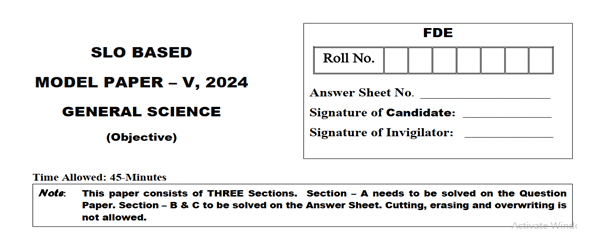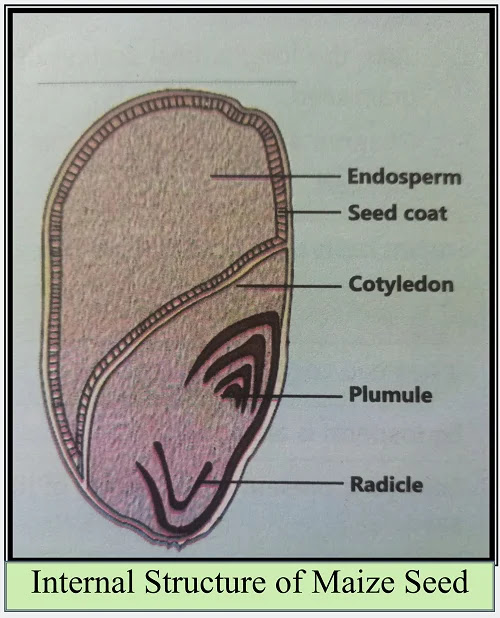SLO-BASED MODEL PAPER CLASS - 5 (2024)
GENERAL SCIENCE
--------------------------
----------------------
---------------------------
--------------------------------
------------------------
------------------------------
--------------------------
-------------------------
------------------------
----------------------
------------------------------
-------------------------
-------------------------
----------------------------
--------------------------
---------------------------
--------------------------
-------------------------
------------------------
--------------------------
--------------------------
--------------------
---------------------------
--------------------
--------------------
--------------------
--------------------
-------------------------
--------------------
----------------------
Note: attempt any TEN parts. All parts carry equal marks. (10x4 =40)
Q. No. 2: Answer these Questions:
i) What are the four effects of pollution on life?
ii) The moon is non-luminous like our Earth. How does it look luminous to us?
Ans: The Moon is non-luminous like our Earth. It doesn't give off light of its own. All the light we see is the reflected light of the sun.
iii) The soil of forests in a hot climate is always hot and moist, whereas the soil of forests in a cold climate is cold and dry. Out of these two areas
where does the decomposition of fallen leaves take place faster and why?
iv) Write the names and functions of the four parts of a flower.
Ans: The four parts of the flower are:
i. Sepals ii. petals: iii. Stamen iv. Carpel
Sepals: They protect the flower.
Petals: They attract insects and birds to the flower
Stamen: 'It is the male reproductive part of a flower.
Carpel: It is the female reproductive part of a flower.
iv) What is meant by First Aid?
Ans:
First Aid:
First aid is temporary care given to a person who has got sudden illness or injury.
v) The astronauts have to face a lot of problems in space. Can you name some of those problems?
Ans:
i. radiation
ii. lack of gravity
iii. disruption of senses
iv. bone and muscle deterioration
v. Health risks
vii) State the importance of classification.
Ans: Classification: The arrangement of organisms into different groups on the basis of similarities and differences is called classification.
Ans: Classification: The arrangement of organisms into different groups on the basis of similarities and differences is called classification.
Importance of Classification:
1. It provides us a good picture of all living things.
2. It gives us information about t interrelationships among different organisms.
3. It helps to identify newly discovered organisms.
1. It provides us a good picture of all living things.
2. It gives us information about t interrelationships among different organisms.
3. It helps to identify newly discovered organisms.
viii) Which soil is useful for pottery? What are its properties?
ix) Why has the Government of Pakistan banned the use of polythene bags?
x) How can directions be found by using a magnetic compass?
xi) What is rusting and what type of change is this?
The change that has occurred on the surface of iron is due to the action of oxygen and water and is called rusting. Due to this reaction, the colour of iron is changed.
Iron + Oxygen + Water = Rusting
It is a chemical change because a new substance iron oxide is formed.
xii) Some animals like hares and rats raise their ears. When and why do they do that?
Ans: Some animals like hares and rats raise their ears;
1. to monitor the environment
2. detect the enemy
3. detect the source of the sound.
xiii) Label the diagram of the Water Cycle.
GENERAL SCIENCESection -C (Marks – 30)
NOTE: Attempt any TWO questions. All questions carry equal marks (2x15=30)
Q. No.3
a) If you are given a longitudinal section of a maize seed, draw and label a diagram to show its internal structure. (5)
Ans: All microorganisms are not harmful. Some microorganisms are beneficial to us.
1. Help in digestion: Bacteria live in the intestines of humans and animals help in the digestion of food.
2. Help in plant growth: Microorganisms help the plant to absorb nutrients from the soil
3. Help in decomposition: Microorganisms keep the atmosphere clean by decomposing dead animals and plants.
4. Making medicines: Many organisms are used for making medicines. Fungi and bacteria are used to make antibiotics.
c) Categorize the following organisms into five groups of invertebrates: (5)
Mosquito: _____Insects
Sea anemone ___Echinoderms
a) A sample of soil is put in a jar, mixed with water, and left for two hours.
Based upon your observations after two hours answer the following: (5)
• Are there any layers of soil?
Ans: Yes, There are three layers in the jar.
• What is at the bottom of the jar?
Ans: A layer of sand and gravel is at the bottom of the jar.
• What is the middle layer like?
Ans: The middle layer is a sticky soil suspended in water.
• What is floating on the surface of the water?
• Which layer of soil do you think will be more fertile?
b) What kind of experiments are conducted in the International space station that cannot be done on Earth? (5)
Ans:
Following are some experiments conducted in the international space station:
i. Space mice
ii. Headless flatworms
iii. ISS, Robot
iv. Ant Farm
v. The Global Ecosystem Dynamics Investigation
vi. Cloud-Aerosol Transport Systems
viii. Drug development using protein Crystals
ix. Testing tissue chips in space
c) List out emergency procedures for a fire alert. (5)
Ans:
i. We should be able to recognize the fire alarm.
ii. On hearing the fire alarm, we should stop what we are doing.
iii. Make a line behind the teacher and exit the building.
iv. Stand outside away from the building/classroom.
v. Ask the staff if you need help.
Q. No. 5
a) Identify the given objects as transparent, translucent, and opaque (5)
Tissue paper, window panes, doors, Soft drinks, Plastic bottles, iron sheets Plastic sheet
b) Why formation of fertilizers from leaves is a chemical change? (5)
Ans. The formation of fertilizers from leaves is called Manures.
Its formation is considered a chemical change because manure formed has a different composition of leaves. It is an organic matter used as a fertilizer in agriculture. It is prepared using green leaves and the process cannot be reversed. It is a chemical I change.
c) Two inflated balloons are suspended using a thread. Predict what will happen: (5)
(i) When balloons are brought closer by moving stands? Do they attract
or repel?
(ii) Rub each balloon with woolen cloth, now what will happen when they are brought closer?
(iii) Rub one balloon with a woolen cloth and one with a plastic comb, how will they react now when moved closer?
Ans: Both the balloons attract each other. Because the balloons rubbed with woolen cloth acquire a negative charge while balloons that are rubbed with plastic comb will acquire a positive charge. Negative and e positive charges attract each other.
(iv)What inference do you draw from the activity?
************************************
Shortcut Links For:
2. 5th Class: Social Study (S.St.) Notes
3. 5th Class: General Science (G.Sc.) Notes
4. 5th Class: Urdu (اُردو) Notes
5. 5th Class: Islamiyat (اسلامیات) Notes
6. 5th Class: Mathematics Notes
1. Website for School and College Level Physics 2. Website for School and College Level Mathematics 3. Website for Single National Curriculum Pakistan - All Subjects Notes
© 2022 & onwards Academic Skills and Knowledge (ASK)
Note: Write to me in the comments box below for any query and also Share this information with your class-fellows and friends.
2. 5th Class: Social Study (S.St.) Notes
3. 5th Class: General Science (G.Sc.) Notes
4. 5th Class: Urdu (اُردو) Notes
5. 5th Class: Islamiyat (اسلامیات) Notes
6. 5th Class: Mathematics Notes






0 Comments
Note: Write me in the comments box below for any queries and also Share this information with your class-fellows and friends.